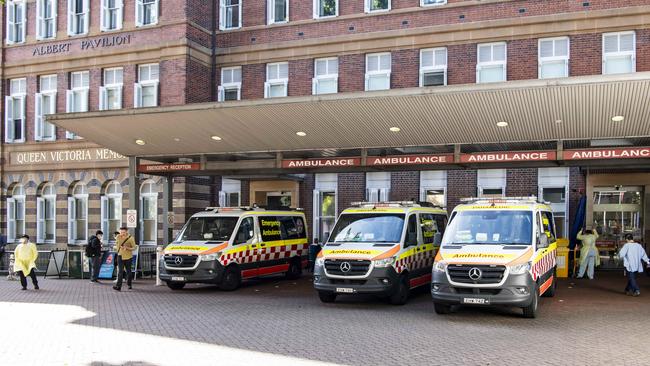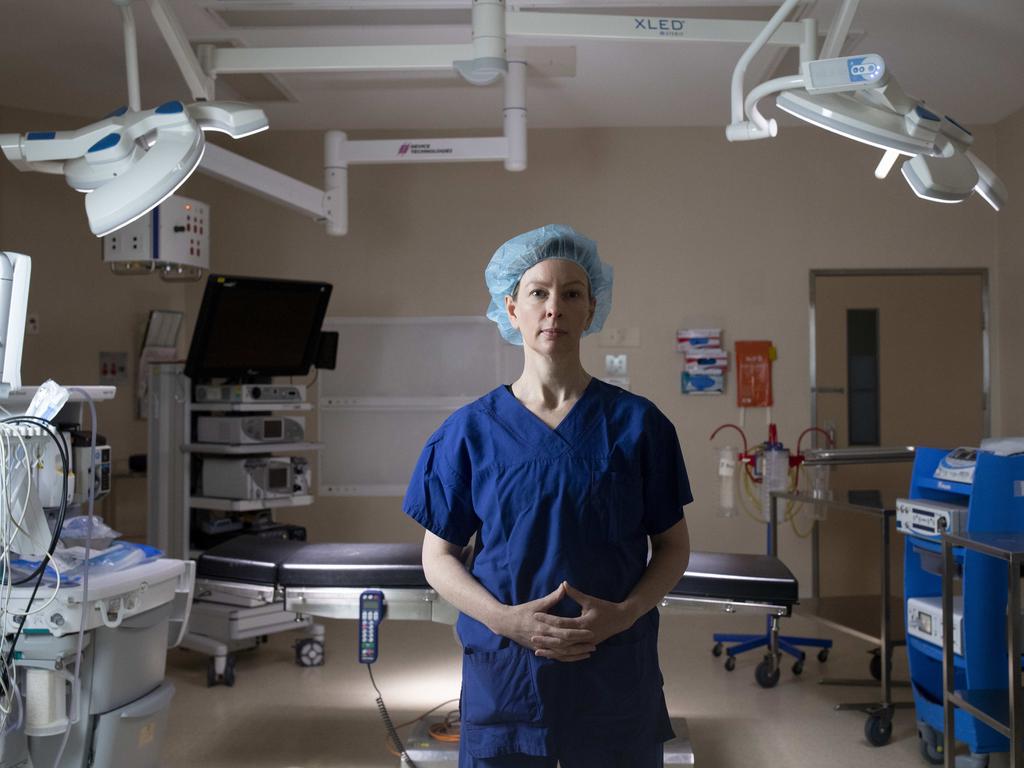Crisis point: public hospitals on life support
The performance of public hospitals has deteriorated to its lowest level ever, with alarming new data on surgery and emergency departments.

The performance of public hospitals has deteriorated to its lowest level ever, with planned surgery wait times now the longest on record, and emergency departments failing to treat on time as many as one in three people with life-threatening conditions.
The Australian Medical Association’s latest public hospital report card says hospitals are at “breaking point” – with jammed wards and a crumbling workforce – as the pressures of population-wide chronic disease, the crisis in primary-care access and affordability, and inadequate disability and aged care supports combine to place an overwhelming load on the system.
Bed-block in wards, where elderly and disabled patients languish and cannot be discharged due to inadequate community support, is prompting mass elective surgery cancellations and overcrowding in emergency departments.
The proportion of people in all triage categories who completed their emergency presentation in four hours or less was just 56 per cent in 2022-23, the report card reveals, a fall of five percentage points compared with the year before and the worst on record.
The percentage of category two planned surgeries – including heart valve replacements, congenital cardiac defects and urgent surgery of fractures that won’t heal on time – that are performed on time has also fallen to the lowest point on record.
People are now waiting on average nationwide 49 days for these operations, almost double the average wait time of 20 years ago. The national proportion of people receiving category 2 planned surgery on time has dropped by almost 25 per cent in the past five years alone.
AMA president Steve Robson said: “This year’s report card shows that our hospitals are at breaking point.
“Capacity within our public hospitals is falling across the board, but it is even more serious when viewed through the lens of an ageing population.
“The proportion of public hospital beds for every Australian over 65 has yet again fallen to the lowest point on record at just 14.3 beds per 1000 population, compared to 32.5 beds in 1991-92.
“It is clear for anyone to see: the numbers point to a system in dire need of urgent attention.”
The unprecedented crisis in the hospitals comes as state and federal governments negotiate over a new National Health Reform Agreement following a midterm review. Health groups are calling for a radical overhaul in funding arrangements amid evidence increased money is not being matched by improvements, but by an increased deterioration.
The AMA is calling for federal and state governments to immediately invest $4.12bn in hospitals to address “the growing and increasingly critical backlog of planned surgeries” until a new national funding agreement is implemented. With funding attached to the new agreement not set to flow until mid-2025 at the earliest, the doctors’ group says the rapid deterioration in hospital performance must be addressed as a matter of urgency in the interim.
Health ministers will meet on Friday and the AMA has written to all states and territories calling for the urgent injection of funds.
A major impasse in the health funding jostle between the states and territories was broken late last year when the commonwealth agreed to scrap an arrangement under which federal funding increases were capped at 6.5 per cent a year, which had led to the states shouldering much of the rapidly increasing public health sector costs in recent years.
A mid-term review of the current NHRA by former Finance Department secretary Rosemary Huxtable found current health funding arrangements drive dollars towards treating inpatients in acute settings rather than keeping them out of hospital.
There is now a major push for a shift towards performance-based rather than activity-based funding. Major negotiations are centred on how to shift funding towards lower-cost initiatives such as out-of-hospital care and primary care in nursing homes.
The AMA says that, in the long term, significant reforms will be required to prevent patients flooding hospitals and often being stuck there in the case of the elderly and disabled due to inadequate care in the community.
“We need to see the next NHRA include greater support for public hospitals to push for improved performance, with performance-based funding designed to incentivise improved patient outcomes,” Professor Robson said.
“We need stronger alignment across our health system, including better integration with NDIS and aged care. We also need proper investment in primary care and intermediate care to alleviate the burden on our public hospitals while improving the wellbeing of Australians.”
The report card shows that efforts to clear elective surgery wait lists in the wake of the Covid pandemic was “immediately negated” in 2022-23, when a nine-day increase in the national wait time for all planned surgeries was recorded – the equal highest jump that is only matched by the period at the height of the pandemic.
“Australians are now waiting almost twice as long on average for planned surgery than they were 20 years ago,” it says.
In emergency departments, the 2022-23 national average of patients seen on time was the lowest in the past 10 years across the four categories of emergency (68 per cent), urgent (58 per cent), semi-urgent (68 per cent) and non-urgent (88 per cent).
The proportion of people in all triage categories who completed their emergency presentation in four hours or less was at just 56 per cent – the lowest since 2011.






To join the conversation, please log in. Don't have an account? Register
Join the conversation, you are commenting as Logout